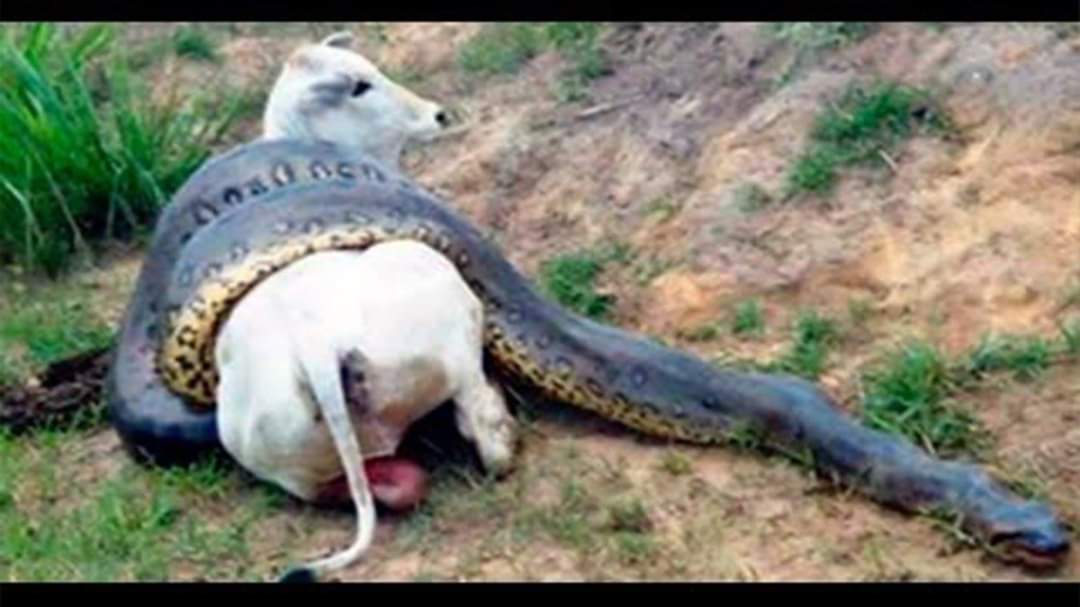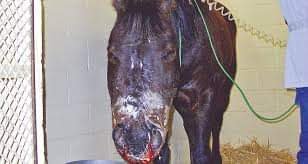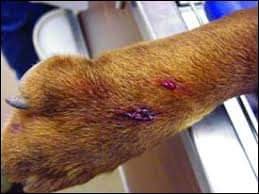By-Dr Uday Kumar, Livestock Consultant, Patna.
The mansoon in India has already hit, In this season, we get a lot of incidence of snake bite particularly in rural area.
Snake bite is a common and frequently devastating environmental and occupational disease, especially in rural areas of tropical developing countries. Its public health importance has been largely ignored by medical science. Snake venoms are rich in protein and peptide toxins that have specificity for a wide range of tissue receptors, making them clinically challenging and scientifically fascinating, especially for drug design. Although the full burden of human and animal suffering attributable to snake bite remains obscure, hundreds of thousands of people and livestock are known to be envenomed and tens of thousands are killed or maimed by snakes every year. Preventive efforts should be aimed towards education of affected communities to use proper footwear and to reduce the risk of contact with snakes to a minimum through understanding of snakes’ behaviour.
According to the World Health Organization (WHO), India has the highest number of deaths of human and livestock due to snakebites in the world. WHO estimates the number of human deaths at 50,000 per annum and approximately ten times in case of livestock . The outcome of snake bites depends on numerous factors, including the species of snake, the area of the body bitten, the amount of venom injected, and the health conditions of the animals . Although the majority of snake species are non-venomous [non-poisonous] and typically kill their prey with constriction rather than venom, venomous snakes [poisonous] often bite their prey as a method of hunting, but also for defensive purposes against predators. Since the physical appearance of snakes may differ, there is often no practical way to identify a species and professional medical attention should be immediately sought for all snake bites.
• Look at the head. Most venomous snakes usually have triangular shaped heads.
• Check out the colours. Some venomous snakes such as the coral snake have bright colours to tell you that it’s dangerous.
• Watch for warning signs. All snakes have some kind of warnings. Rattlesnakes loudly rattle the rattle on their tail. Other snakes just hiss and snap at you.
• Check the tail. The bottom of the tail of venomous snakes looks the same as the rest of the be If the snake has a cross pattern (like a diamond shape) it is non-venomous
Steps to be followed in case of Non-venomous Snake-bites:————
• Immediately seek medical attention, clean the wound carefully with clean water and Stay calm. Use an alcohol soaked pad if one is available. Try not to panic.
• Treat the wound by applying a thin coating of antibiotic ointment.
• Bandage the wound. This will protect it and help to discourage infection.
• Although not likely to be life-threatening, bites from non-venomous snakes can still be painful and lead to infection.
Steps to be followed in case of Venomous Snake-bites:
• Get the victim away from the snake. Your first priority is to make sure that neither you nor the victim receives any additional bite.
• Remove constricting items. Bites from venomous snakes can cause rapid and severe swelling. Remove
• Minimize your animal activity. Higher levels of activity will increase blood flow and increase the spread of venom throughout body.
• Do not cut the bite site or use your mouth to suck out the poison. These are likely to be ineffective and can increase the likelihood of infection.
• Clean the bite site with soap and water. Cover the wound with a dressing.
• Wrap a tight, but not uncomfortable elastic bandage two to three inches above the bite site. The elastic bandage should not be uncomfortable as that will lead to the animal unconsciously flexing their muscles, undoing the purpose of immobilizing the limb.
• The patient must be transported to a place where they can receive medical care (dispensary or hospital) as quickly, but as safely and comfortably possible. Any movement especially movement of the bitten limb, must be reduced to an absolute minimum to avoid increasing the systemic absorption of venom.
Tips——–
Most snakes are not venomous. Most venomous snakes have triangular shaped heads.
Your best option is to avoid snakebite. Take care in places where snakes are common. Beware when lifting objects like pieces of wood, snakes may hide under them
Snake Venom poisoning are classified as———
1. Elapines ( mainly Cobras ) acting on nerves and repiratory centre.
2. Viperines ( mainly vipers) acting in blood components heamotoxcic necrotising and coagulation .
With symptoms you can get a clue to treat the aftected animals
Elapines :——–






























1. Acute phase 2- 24 hrs
2. Ensuring phase 24-48 hrs
3. Convalescent phase 2-10 days



Principles of first-aid —
First-aid treatment is carried out immediately or very soon after the bite, before the patient reaches a dispensary or hospital. It can be performed by the snake-bite victim himself/herself or by anyone else who is present and able. Unfortunately, most of the traditional, popular, available and affordable first-aid methods have proved to be useless or even frankly dangerous. These methods include: making local incisions or pricks/punctures (“tattooing”) at the site of the bite or in the bitten limb, attempts to suck the venom out of the wound, use of (black) snake stones, tying tight bands (tourniquets) around the limb, electric shock, topical instillation or application of chemicals, herbs or ice packs. Local people may have great confidence in traditional (herbal) treatments, but they must not be allowed to delay medical treatment or to do harm.
Recommended first-aid methods —-
Reassure the victim who may be very anxious Immobilize the whole of the patient’s body by laying him/her down in a comfortable and safe position and, especially, immobilize the bitten limb with a splint or sling. Any movement or muscular contraction increases absorption of venom into the bloodstream and lymphatics [level of evidence E]. If the necessary equipment and skills are available, consider pressure-immobilization or pressure pad unless an elapid bite can be excluded In Myanmar, the pressure pad method has proved effective in victims of Russell’s viper bite (Tun Pe et al., 1995) [level of evidence O]. Avoid any interference with the bite wound (incisions, rubbing, vigorous cleaning, massage, application of herbs or chemicals) as this may introduce infection, increase absorption of the venom and increase local bleeding (Bhat, 1974) [level of evidence O]
How to identify snake bites———-
Many snake bites can cause injury or death in livestock, and treatment depends on the type of animal bitten and its sensitivity to that particular snake’s venom. Horses are at the top of the sensitivity list, followed by sheep, cows, goats, dogs (and humans), pigs and cats.
When a sheep is bitten by a poisonous snake, the animal will experience difficulty swallowing, the tongue will protrude limply from the mouth and the animal will dribble saliva.
This may be followed by the expulsion of the stomach contents through the nostrils and the sheep lying down, unable to move. Death can occur as a result of respiratory failure, if bitten by a cobra, or the animal could drown in its own saliva.
For goats, symptoms are similar to those of sheep, though goats show less sensitivity to snake venom. However, goats can die from puff adder bites. Surprisingly little research has been done on snake bites in cattle.
However, although the animals are extremely sensitive to venom, it would appear that death occurs only with multiple bites. Other factors that come into play include the amount of venom injected; the size of both the cow and the snake; and the age and health of the animal.
A healthy cow is less likely to succumb to the effects of venom than an older individual in poor health. Where it was bitten is also important.
Typically, bites occur on the head, face and muzzle area while the animal is grazing, and are far more serious than bites on the legs. Cattle that have been bitten often show signs of a “goose stepping” type of leg action.
BITE TYPES———-
Venomous snakes fall into two categories: elapids, which include cobras and mambas, and vipers, such as puff adders. Elapids have short fangs and tend to “chew” their venom into their victim.
The poison affects the nervous system and kills by paralysing the respiratory system.
Vipers have long, hinged hypodermic needle-like fangs that penetrate the flesh, delivering venom deep into the tissue. This causes enormous damage to blood vessels and loss of tissue.
Localised bleeding and tissue necrosis can occur even in animals which make a full recovery. In some cases, persistent lameness may occur.
However, many snake bites in livestock are thought to be “dry bites”, where no venom is injected. A snake can determine the size of an animal and its venom is a valuable resource it doesn’t waste indiscriminately.
Therefore a dry bite is delivered as a warning. It’s also important to remember that not all snakes are venomous. Unless you can positively identify the snake, assume that it has delivered a dry bite if no symptoms materialise.
Unfortunately, every year thousands of harmless snakes are killed, when, in fact, they are one of the best rodent predators a farmer could wish for.
FIRST AID———-
Before calling the vet, try and determine if the animal has actually been bitten by a venomous snake. Although it may be difficult to locate the bite due to the hair on the animal’s body, bleeding or swelling are good signs to look out for.
A bite from a venomous snake will leave two quite distinctive puncture wounds, which will bleed profusely in the case of a puff adder bite.
A bite from a non-venomous snake will probably leave no teeth marks, unless it was from a large python. Teeth marks result in multiple puncture wounds and copious bleeding.
SOME TIPS———-
• If the animal has been bitten in the nostrils or muzzle, these areas will swell, making it difficult for the animal to breathe. Pass a piece of clean tubing up the nostrils to maintain an open airway. Where the animal shows signs of paralysis, breathing down the tube will help keep it alive until the vet arrives.
• Keep the animal calm, as an increased heart rate will spread venom through the body much more rapidly. Let the vet come to the animal rather than trying to walk it to a more accessible spot, as this will only increase its heart rate.
• Never cut the wound and try to suck out the venom. If you have a cut in your mouth, you’ll be poisoned as well.
• In the case of a cobra bite (excluding the Mozambique spitting cobra), apply a pressure bandage over the bite and wrap it up to the top of the limb. This is not a tourniquet as its aim isn’t to stop blood flow, but to slow down the venom’s absorption into the lymph system. (If applied to a viper bite, where swelling develops, this will do more harm than good.)
• For viper and spitting cobra bites, simply keep the animal calm, and seek veterinary treatment as quickly as possible.
• Do not apply a hot or cold compress, as this could damage the tissue even further.
• Do not administer any form of alternative treatment. The only proven treatment for snake bites is anti-venom.
• Your vet should be able to determine whether the animal was bitten by a snake, whether or not venom was injected, what type of snake it was and if the animal requires anti-venom. Some animals may recover simply with supportive care.
How to recognise a snake bite———
________________________________________
If your pet is unfortunate enough to have an encounter with a snake you can help by being aware of the signs and symptoms of snake bite, and getting the affected animal to the hospital as quickly as possible. Dogs, cats and horses are all at risk, although curious dogs are the most frequently affected.
The first signs of snake envenomation are usually excitement, trembling, salivation and vomiting, gradually developing into weakness, wobbly gait and eventually paralysis. Afflicted dogs often have dilated pupils and slow light reflex, with clotting problems in their blood. Depending on the type of snake and how much venom has been injected, an animal bitten by a snake may show any of the following symptoms:-
• Localised swelling and irritation
• Vomiting
• Drooling and trembling
• Dilated pupils
• Involuntary bladder or bowel release
• Red or brown discolouration of urine
• Rapid breathing and/or panting
• Bleeding from bite wounds or bloody diarrhoea
• Collapse. An animal may collapse immediately but then apparently recover, then develop symptoms over the course of the next hour
• Paralysis (starting with the hind legs and progressing towards the head)
HOMOEOPTHIC REMEDIES FOR SNAKE BITES——-
(NB-The remedy is same for human and animals)
Homoeopathic remedies can be important adjunct or even curative intervention in the treatment of a snake bite victim. This should be attempted only getting while getting as quickly as possible to the nearest emergency medical facility. Following are some medicines to consider for snake bites.
HOMOEOPATHIC REMEDIES
GOLONDRINA Q- A specific remedy for antidoting snake poison. Its use also renders the body immune to the influence of the snake venom , and thus as a prophylactic. Mother tincture is applied externally
LEUCAS ASPERA Q- Another specific remdy for snake bite. In case of snake bites mother tincture is to be applied both externally and internally. 10-15 drops per dose , every 15-20 minutes interval , until the patient feels better.
CEDRON Q-Cedron is one of the top medicines which have the power of antidoting snake bites. It is given both externally and internally.
ACONITUM NAPELLUS 30-Aconitum is an effective remedy in the initial stages. Aconite is prescribed when the person has great fear of death , with anxiety or panic and restlessness
ARSENICUM ALBUM 30-Arsenic is another remedy for snake bite with anxious , and restlessness. They are chilly people who have fear of death and desire company. They may have burning pain that is relieved by heat.
CARBO VEGETABILIS 30-Carbo veg is effective for bite reactions that have progressed in to shock, coldness , blue discolourations, weak pulse, clammy sweat, and collapse.
ECHINACEA Q-Echinacea is prescribed when dullness, exhaustion and marked drowsiness present. Here the wound may be infected , septic looking and painful.
HYPERICUM PERFORATUM 30-Hypericum is indicated when neuralgic , shooting pain around wounds of nerve rich areas , such as fingers and toes.
LACHESIS 200-Lachesis is another effective remedy and it is indicated for individuals who has prostration, restlessness, painful bruising and possibly bleeding. Another leading symptom is that the person cannot bear anything tight around them, like tight necklines or waistbands. The person may be very talkative.
LEDUM PAL 30- Ledum pal is useful for puncture wounds , especially when the wound feels cold and is relieved from cold applications. The person may have muscle twitches or spasms near the area of bite.
Reference:On request.







